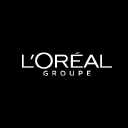L’Oreal’s Growth Strategy Includes Acquiring Brands That Promise Growth While Shedding Off Weaker Brands
L’Oreal is slated to release its Q2 2017 earnings on July 27th. The company outperformed the global beauty market and ended 2016 with a 4% y-o-y growth. The growth momentum hasn’t slowed down in 2017, as well. For the first quarter of the year, the L’Oreal Group reported a growth of 7.5% y-o-y to end with total sales of ~ €7.05 billion. The drivers for this growth were the growing demand for beauty products and the rise of luxury products sales especially from regions like Asia. Currently, L’Oreal’s New Markets are the best performers in geographic terms with Eastern Europe and Asia being the main growth drivers. Though the company’s e-commerce sales still accounts for around 7% of its total sales, yet it is growing at an impressive rate with an almost 30% y-o-y growth in Q1 2017. While L’Oreal believes in the growth by acquisition strategy, it also sheds off brands that do not work well for itself.
Beauty Leaders Are Following The Growth By Acquisition Strategy
L’Oreal and Estee Lauder had both been on shopping sprees over the last few years, making big and small ticket acquisitions. While their acquisitions mostly focus on brands that are popular among millennials and brands with huge social media celebrity backups, they are also shopping for brands belonging to segments that might define the beauty routine of the future. One such growing segment is cosmeceuticals. The global cosmeceutical market is expected to grow at a CAGR of nearly 6% between the period of 2017 to 2021. The biggest markets are expected to be the US, China, Brazil, Japan, and India. In an effort to further grow its active cosmetics (cosmeceutical) segment, L’Oreal announced its intention to acquire the skincare brands, CeraVe, AcneFree, and Ambi from Valeant Pharmaceuticals for a sum of $1.3 billion, in January of this year. The brands’ popularity among health professionals suggest that those are expected to strengthen the company’s ties with the professionals who are a key factor towards developing products in the active cosmetics market. L’Oreal’s market position in North America, the fastest growing market for active cosmetics, is expected to grow further due to these acquisitions. The company’s influence in other geographies gives it the opportunity to expand the footprints of the acquired brands beyond North America.
- Is There More Room For Growth In L’Oreal Stock?
- After Underperforming The Markets, Can L’Oreal Stock Rally?
- L’Oreal Stock Poised For Bounce Back After Rough Month?
- After Dismal Performance Last Month, L’Oreal Stock Looks Set To Rebound
- L’Oreal Stock Looks Set For A Rally On The Back Of Strong Earnings Growth
- Forecast Of The Day: L’Oreal Makeup Revenues
L’Oreal Sells Off The Body Shop
The leading Brazilian beauty company, Natura, is expected to buy The Body Shop from L’Oreal for €1 billion and the deal is expected to close by the end of this year. The Body Shop might finally be owned by a company that follows the same principles of natural and eco-friendly beauty products and this might work in favor of the brand which has been going through a rough phase over the last few years. The Body Shop, known for its ethical and organic products, received a backlash from its loyal users when a corporate giant like L’Oreal took control of it back in 2006. Maybe, the lost image of The Body Shop will be slowly recovered once Natura takes ownership.
The Body Shop has over 3,000 standalone stores in 66 countries. The brand had been suffering from a steady decline in its sales over the last few years due to the dilution of its environment-friendly brand image and because of more powerful competitors in the natural beauty market. In 2016, its sales declined by 5% y-o-y to around €921 million and its operating profit declined by 38% y-o-y to €34 million. The joint entity of Natura and The Body Shop would churn out net sales of about €3.15 billion with a presence in around 3,200 stores across the globe.
Editor’s Note: We care deeply about your inputs, and want to ensure our content is increasingly more useful to you. Please let us know what/why you liked or disliked in this article, and importantly, alternative analyses you want to see. Drop us a line at content@trefis.com
See More at Trefis | View Interactive Institutional Research (Powered by Trefis)
